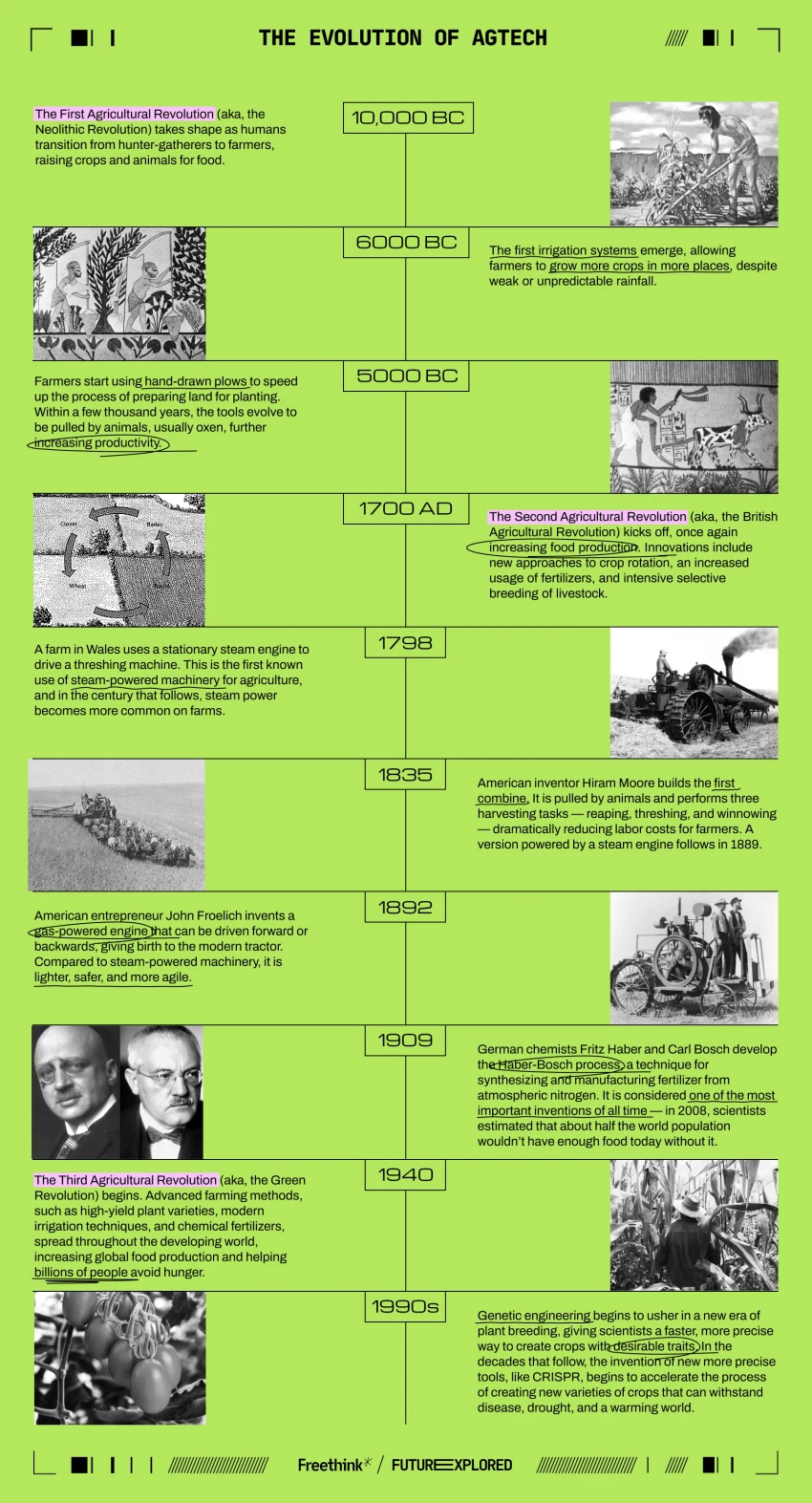Infographic: 800 million people worldwide are hungry and a third of the population food insecure. These 3 tech innovations could help
Infographic: 800 million people worldwide are hungry and a third of the population food insecure. These 3 tech innovations could help


It’s 2050. The global population has increased to nearly 10 billion, and while we’re still working to ensure every person on the planet has the opportunity to live their best life, we have eliminated one of humanity’s oldest foes: tonight, no one will go to bed hungry. Here’s how we’ll (maybe) do it.
…
New breeding techniques
While genetically engineered foods aren’t brand new, new breeding techniques (NBTs) like CRISPR are making it easier for scientists to manipulate the genomes of crops in ways that make them more resilient toward climate change.
[Though] we haven’t seen too many crops developed using NBTs reach consumers just yet, David Friedberg, founder and CEO of the Production Board, a holding company that invests in agtech startups, told Freethink that regulators are starting to catch on to their potential.Precision agriculture
While new breeding techniques can make crops more climate-resilient, a trend called “precision agriculture” is improving farming itself, using everything from drones and robots to AI and GPS.
The core idea behind precision agriculture is that farmers can use data to make smarter decisions about how they use water, pesticides, and other inputs — this can increase a farm’s efficiency and crop yields, even in the face of a changing climate.
…
Biologicals
While precision agriculture can help farmers be more deliberate with their use of fertilizers, pesticides, and other chemicals, another growing trend — the use of biologicals — could reduce the need for them altogether, helping make farming more sustainable without affecting outputs.
Biologicals are farming products that contain natural ingredients, such as plant extracts, living microbes, and even insect pheromones. Some are designed to protect crops from pests and other threats, while the goal of others is to encourage plant growth.

This is an excerpt. Read the original post here

 | Videos | More... |

Video: Nuclear energy will destroy us? Global warming is an existential threat? Chemicals are massacring bees? Donate to the Green Industrial Complex!
 | Bees & Pollinators | More... |

GLP podcast: Science journalism is a mess. Here’s how to fix it

Mosquito massacre: Can we safely tackle malaria with a CRISPR gene drive?

Are we facing an ‘Insect Apocalypse’ caused by ‘intensive, industrial’ farming and agricultural chemicals? The media say yes; Science says ‘no’
 | Infographics | More... |

Infographic: Global regulatory and health research agencies on whether glyphosate causes cancer
 | GMO FAQs | More... |

Why is there controversy over GMO foods but not GMO drugs?

How are GMOs labeled around the world?

How does genetic engineering differ from conventional breeding?
 | GLP Profiles | More... |

Alex Jones: Right-wing conspiracy theorist stokes fear of GMOs, pesticides to sell ‘health supplements’




 Viewpoint — Fact checking MAHA mythmakers: How wellness influencers and RFK, Jr. undermine American science and health
Viewpoint — Fact checking MAHA mythmakers: How wellness influencers and RFK, Jr. undermine American science and health Viewpoint: Video — Big Solar is gobbling up productive agricultural land and hurting farmers yet providing little energy or sustainabilty gains
Viewpoint: Video — Big Solar is gobbling up productive agricultural land and hurting farmers yet providing little energy or sustainabilty gains Fighting deforestation with CO2: Biotechnology breakthrough creates sustainable palm oil alternative for cosmetics
Fighting deforestation with CO2: Biotechnology breakthrough creates sustainable palm oil alternative for cosmetics Trust issues: What happens when therapists use ChatGPT?
Trust issues: What happens when therapists use ChatGPT? 30-year-old tomato line shows genetic resistance to devastating virus
30-year-old tomato line shows genetic resistance to devastating virus California, Washington, Oregon forge immunization alliance to safeguard vaccine access against federal undermining
California, Washington, Oregon forge immunization alliance to safeguard vaccine access against federal undermining The free-range chicken dilemma: Better for birds, but with substantial costs
The free-range chicken dilemma: Better for birds, but with substantial costs ‘You have to treat the brain first’: Rethinking chronic pain with Sanjay Gupta
‘You have to treat the brain first’: Rethinking chronic pain with Sanjay Gupta
